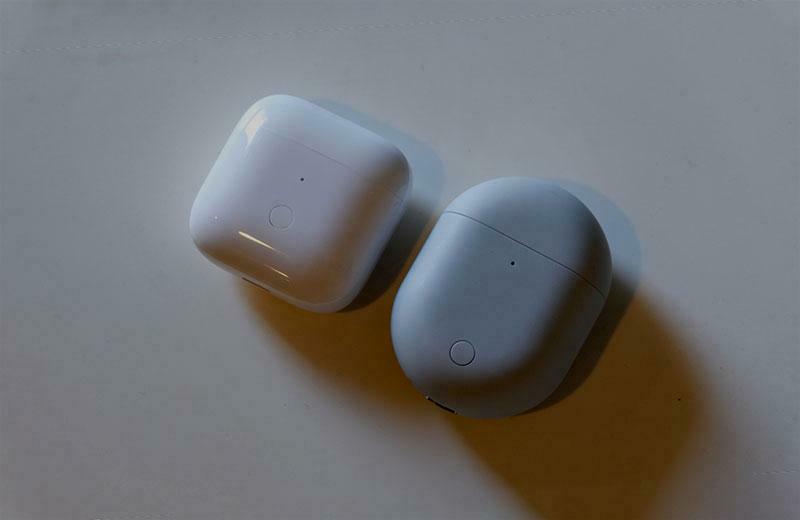Together with the Mi 11T Pro smartphone, Xiaomi Redmi released two pairs of TWS wireless earbuds: Xiaomi Redmi Buds 3 and Buds 3 Pro. In some respects, these models differ significantly and are aimed at different categories of buyers. But there is a lot in common between them.
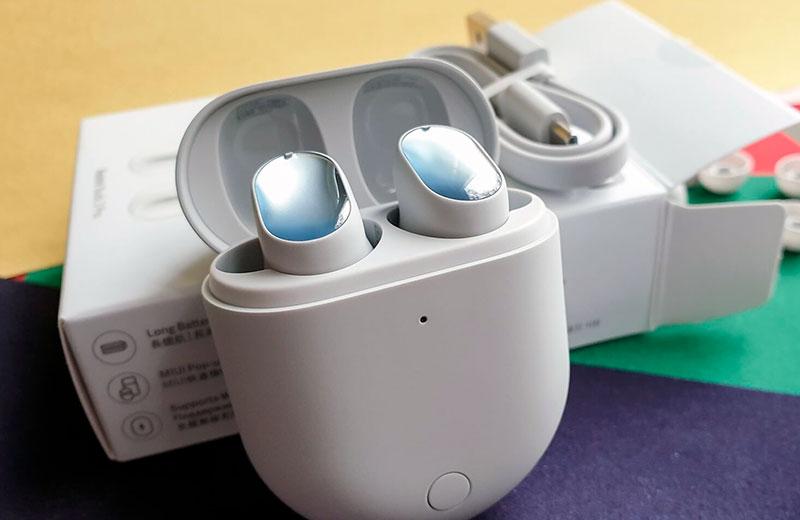
I tested both models and compared how the new Redmi TWS earbuds differ and whether they are worth buying.
Contents
Comparison of the characteristics of Xiaomi Redmi Buds 3 and Buds 3 Pro
| Peculiarities | Redmi Buds 3 | Redmi Buds 3 Pro |
| Design | Wireless TWS earbuds | Wireless TWS plugs |
| Emitters | 12mm dynamic | 9mm Composite Vibrating Diaphragm |
| Bluetooth | 5.2 | 5.2 |
| Communication range | 10 m (open space without obstacles) | 10 m (open space without obstacles) |
| Chip | Qualcomm QCC3040 | Qualcomm QCC3040 |
| Water resistance | IP54 | IPX4 |
| Microphones | 2 pcs, highly sensitive | 3 pcs, highly sensitive |
| Autonomy and charging | 5 hours earphone, 20 hours with charging case; 10 minutes fast charging gives 1.5 hours of battery life | 6 hours earphone, 28 hours with charging case |
| Battery | Headphones: 35mAh Charging case: 310mAh | Headphones: 35mAh Charging case: 470mAh |
| Earphone dimensions and weight | 40.7 x 16.9 x 18.7 mm, 4.5 g | 25.4 x 20.3 x 21.3 mm, 4.9 g |
| Charging case dimensions | 49.6 x 49.6 x 24.4 mm, 51 grams | 65 x 48 x 26 mm, 55 g |
| Price | 3 thousand rubles | 4.5 ths rub. |
Unpacking and kit
The package contents of Redmi Buds 3 and 3 Pro are the same:
- Charging case
- USB-C cable
- Several pairs of attachments
- Documentation
Design and appearance
The Xiaomi Redmi Buds 3 Pro case is made in the form of a “pill”, and the headphones themselves are in-ear and small. The body is covered with reflective touch panels, shimmering in light blue shades. The coating is matte and pleasant to the touch.

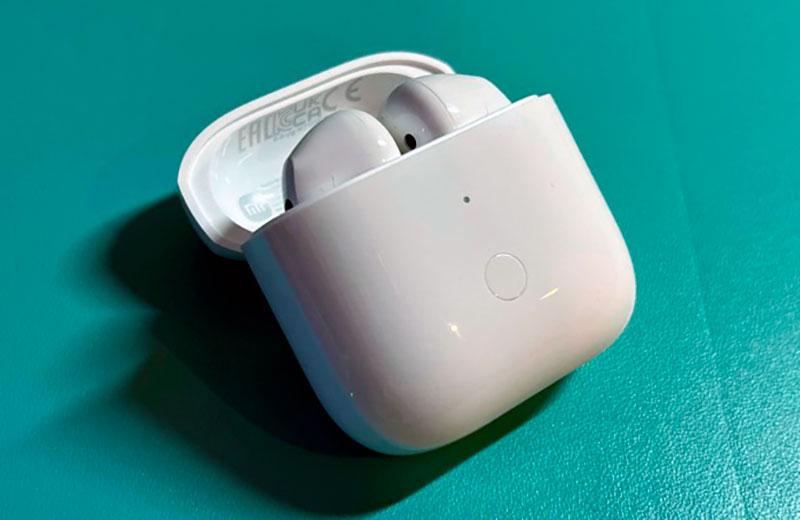
The Redmi Buds 3 has a more rectangular case when the type is half-open earbuds. The headphones have a white case with a long stem and a slippery surface. Buds 3 can easily fall out of hand.
Despite the different shape, the covers are made in the same style. They have hinged covers, a button in the front for establishing a connection and a USB-C connector for charging, on the bottom. As with the earbuds, the Buds 3 Pro case is matte and pleasant to the hands, while the Buds 3 is glossy and slippery.
Headphone control
Both Xiaomi Redmi Buds 3 and Buds 3 Pro are controlled via touch panels on the case.
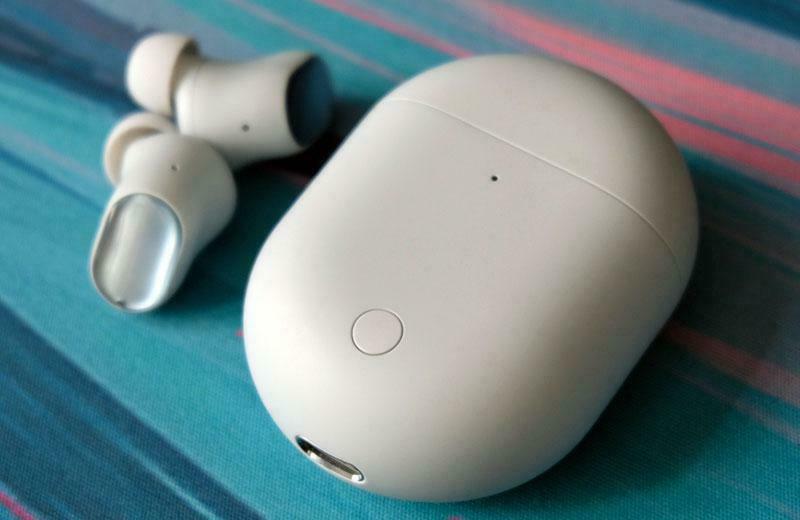

There are no complaints about the quality of the touch panels. Double and triple clicks and hold clicks are supported. They are responsible for controlling playback and switching between tracks. In addition, the transparency mode can be activated on the Buds 3 Pro model.
These Redmi headphones do not have applications for smartphones, it will not work to set up control and sound here.
The convenience of use
In use, the new Redmi Buds 3 Pro are almost flawless. They do not slip out of your hands when you take them out of the case and you can simply insert them into your ears.
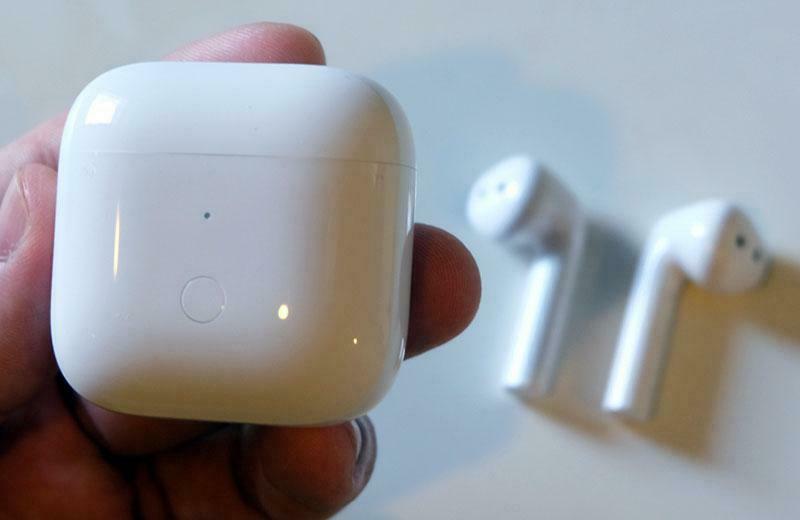

If you choose the right attachments, the earbuds will stay securely in place and will not fall out even during training. Music is also comfortable to listen to for a long time. The Buds 3 Pro also has a multi-connection function. They can be used simultaneously with a laptop and a smartphone. The headphones will automatically switch to the device where the sound is coming from.
There is also a removal detector – the music is paused when you take the headphones out of your ear, and continues when you put them back in.
The Buds 3, on the other hand, can easily slide out when you take them out of the charging case. After listening for a long time, the inner part of the ear begins to ache a little, and the leg sometimes touches the face. I am glad that there is also a removal detector here.
Sound quality and noise reduction
The main advantage of the Redmi Buds 3 Pro over the Redmi Buds 3 is the sound quality.
The Buds 3 Pro features hybrid noise cancellation using three microphones that analyze ambient noise. In the case of the Buds 3, you only have to rely on the maximum volume of the music to isolate from external noise.
The Buds 3 Pro’s active noise cancellation works well, but far from ideal. Even at a volume of about 60%, you will hear people talking and crying children, albeit somewhat muffled. At only 80% volume, you can count on no external noise to interfere with your music enjoyment.
When it comes to sound quality, the Buds 3 Pro impresses with powerful bass and decent detail across the entire frequency range. While the Buds 3 are no match for the Pro version, they produce decent sound relative to the competition. For the budget price segment, the sound quality is acceptable, but there is not enough active noise cancellation.
The treble sounds distinct, but distortion appears at high volumes. The bass is there, so the Buds 3 do a pretty good job with modern music.
Microphones and calls
Xiaomi Redmi Buds 3 and Buds 3 Pro are also suitable for talking on the phone, and the “younger” model shows itself even better.
When using Buds 3 Pro, your voice sometimes seems distant and muffled to the interlocutors, which Buds 3 does not. Perhaps the reason is the oblong body of the standard model, which is why the microphones are a little closer to the mouth.
During calls, I did not notice any audio delay or disconnection. In general, the Buds 3 are better suited for online conferencing and chatting with loved ones.
Autonomy of Redmi Buds 3 Pro and Buds 3
Owners of Redmi Buds 3 Pro can expect 6 hours of music playback at high volume, without active noise cancellation, and 5 hours with ANC.
If you lower the volume, the result will be even better. Together with the charging from the case, the battery life is 28 hours – which is very good. Buds 3 Pro supports Qi wireless charging. And 10 minutes of connection will give you 3 hours of listening.
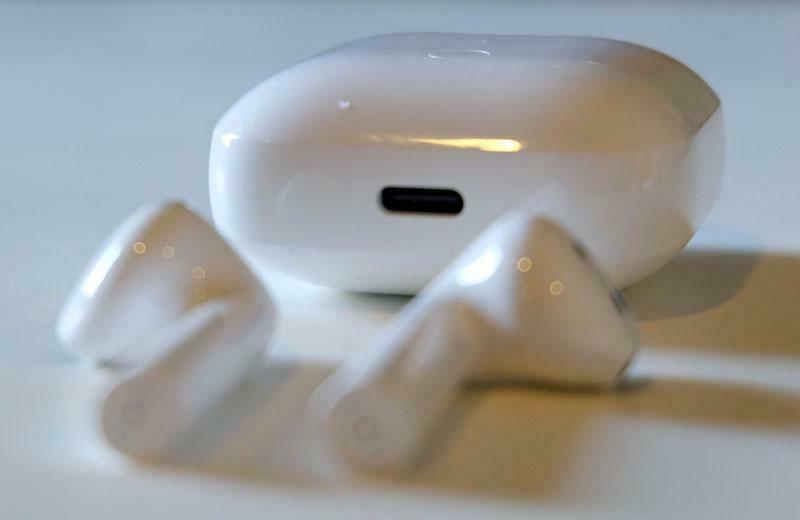
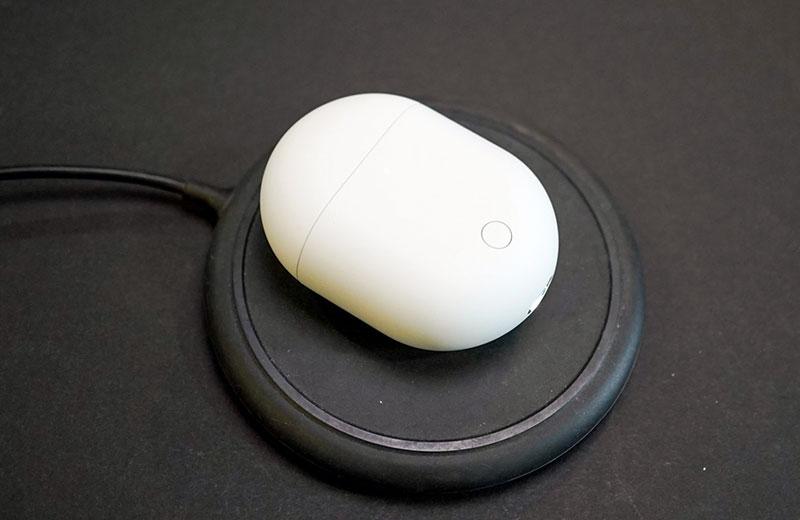
The energy of the Redmi Buds 3 headphones is enough for 4.5 hours of work from a single charge and 20 hours – taking into account the battery of the case. Not much, but with normal use you don’t have to worry about charging for a few days. There is no wireless charging, although this is expected for the budget segment.
Outcome
The tested Xiaomi Redmi Buds 3 Pro and Buds 3 are TWS headphones of quite good quality. The Pro model is more expensive, but it also has better sound quality and more functions. The Buds 3 Pro are good for music and games, although there are problems with phone calls.
The Redmi Buds 3 are more entry-level wireless earbuds, although they have their advantages too. They sound good for a budget model, and control via touch panels is quite convenient. The only thing missing is active noise cancellation and a companion app, with the latter also affecting the Buds 3 Pro.
Advantages and disadvantages
Advantages
- Good sound
- Fast charging
- Quite a reasonable price
- Connecting two devices
Disadvantages
- No volume controls
- Some functions only on the Pro version

